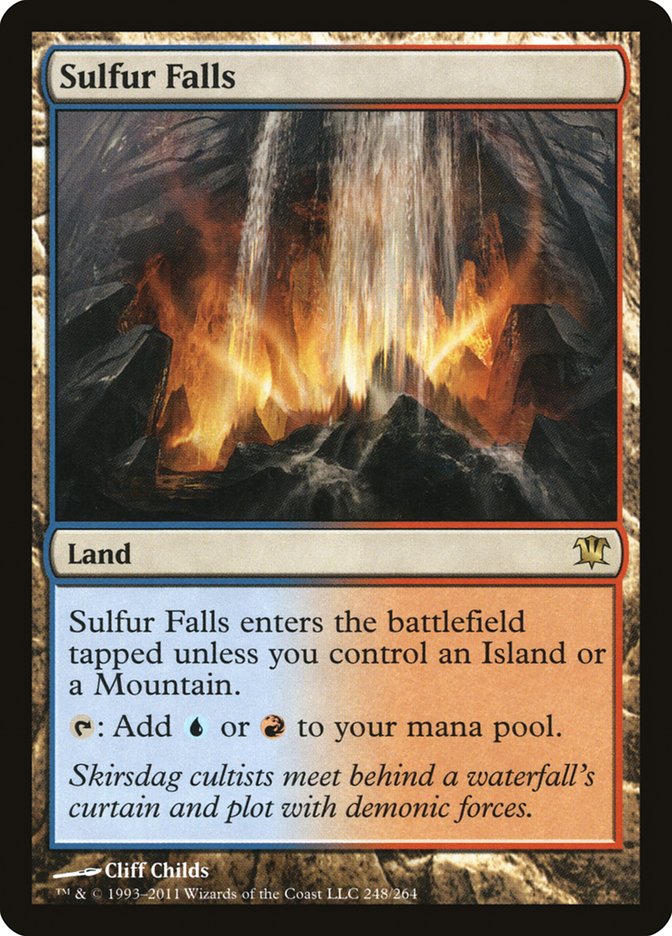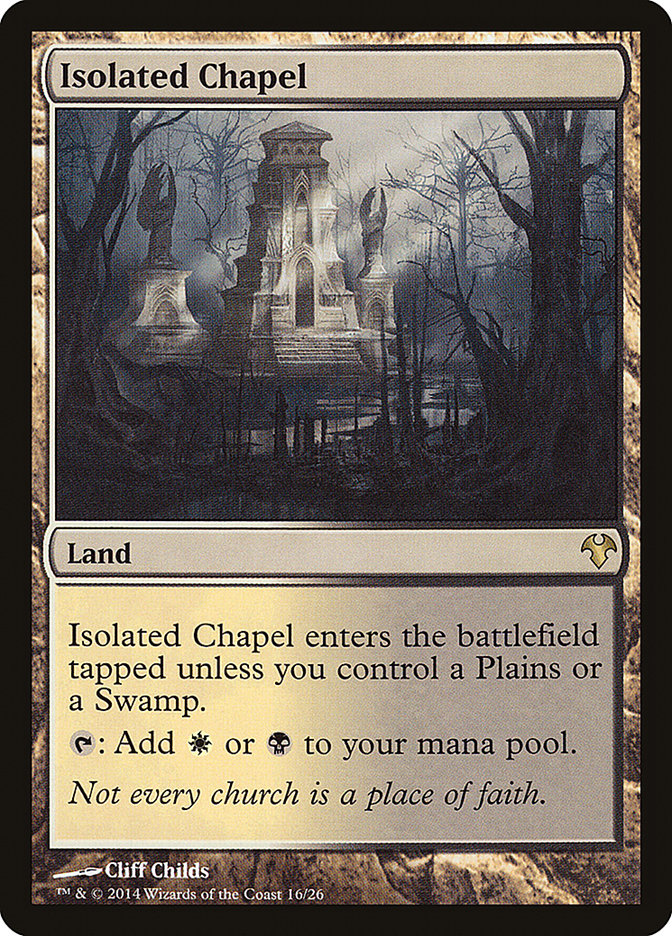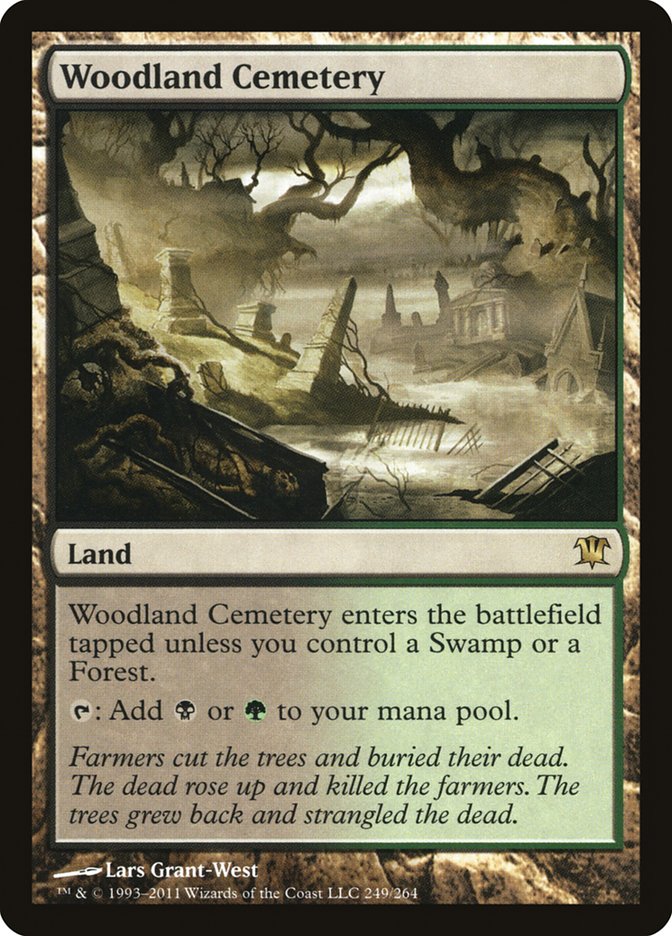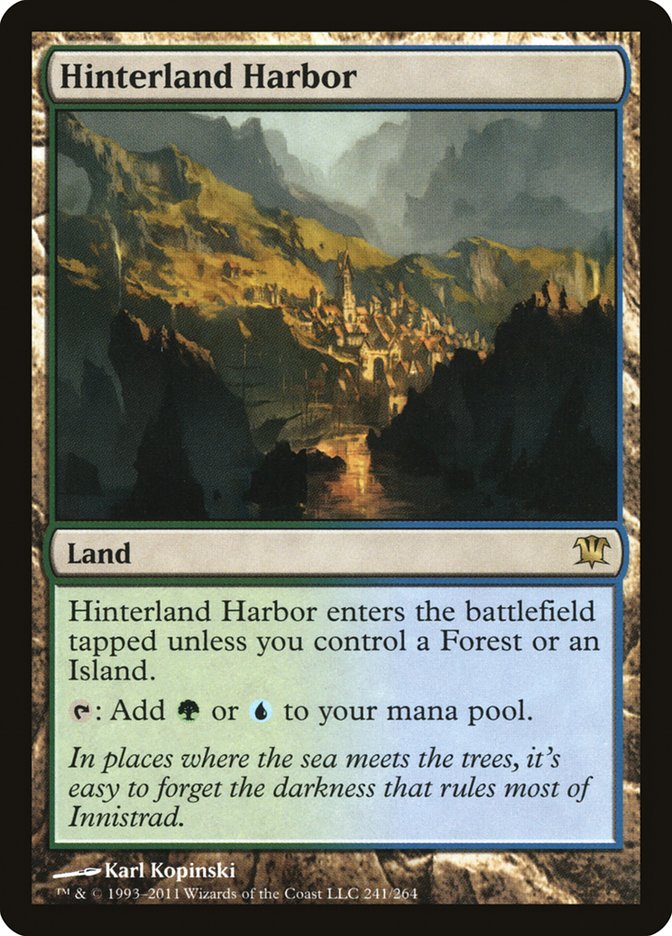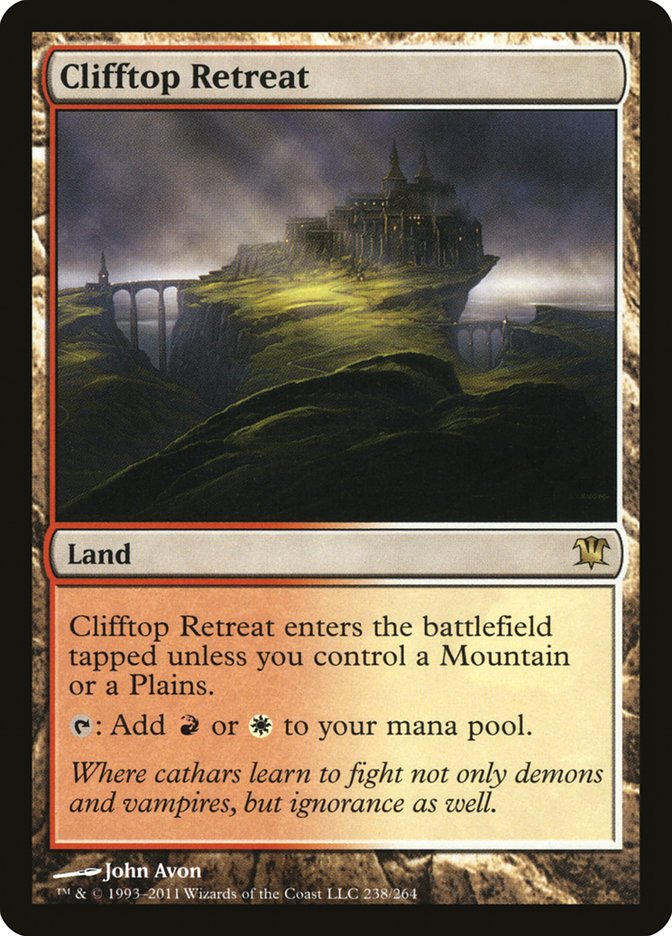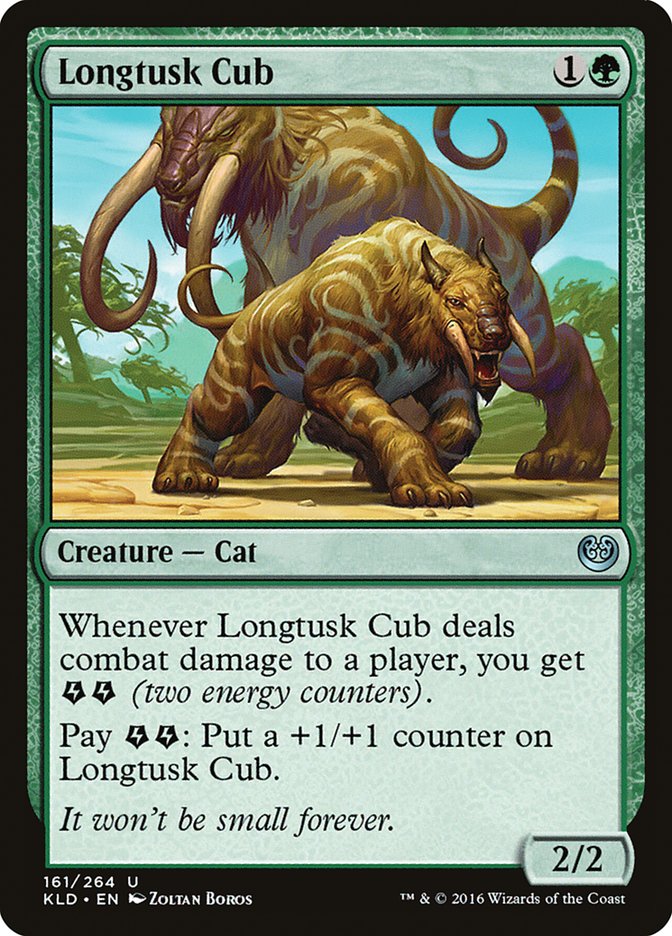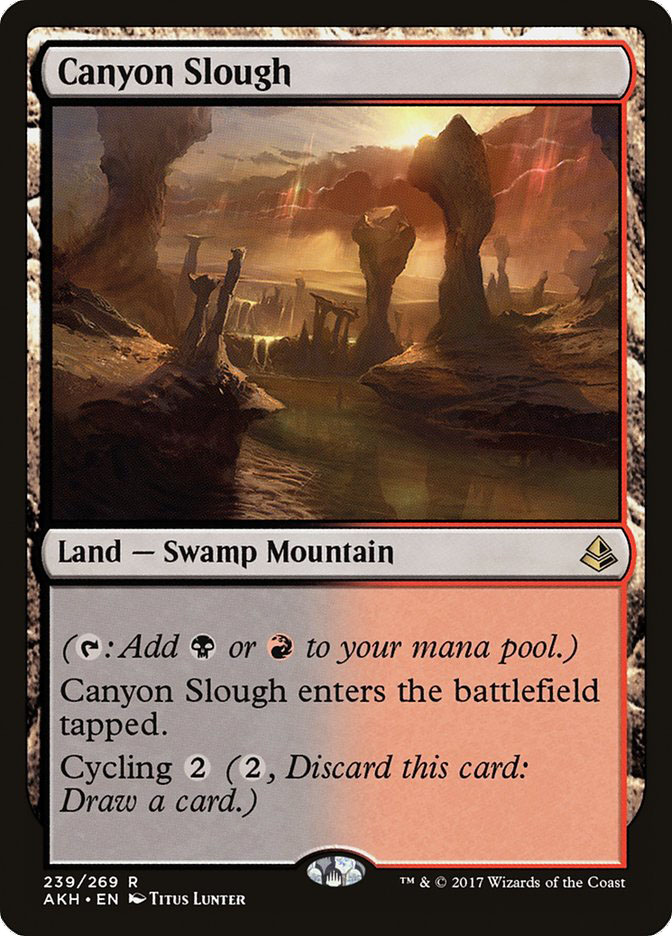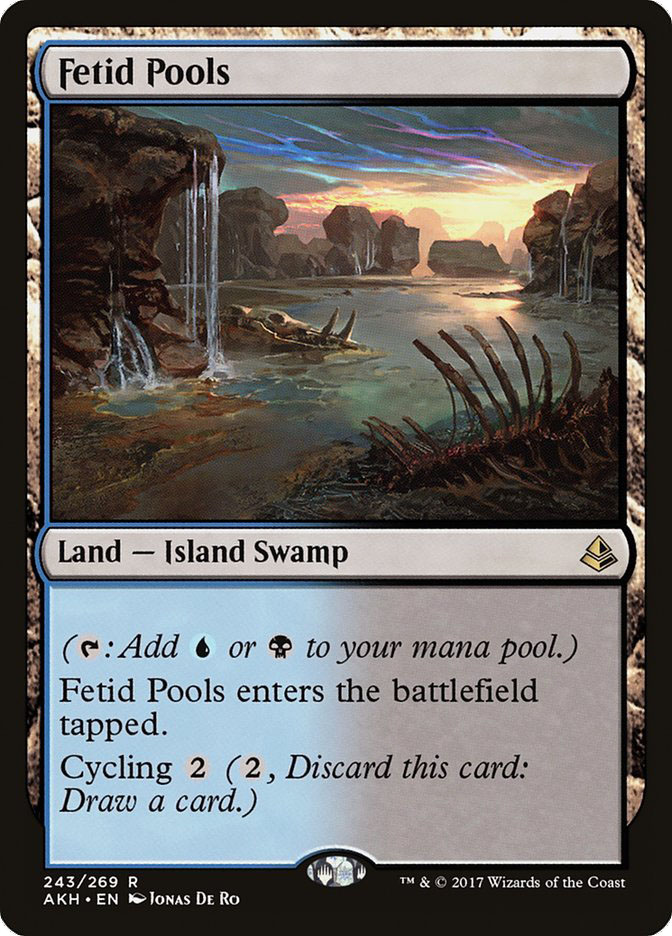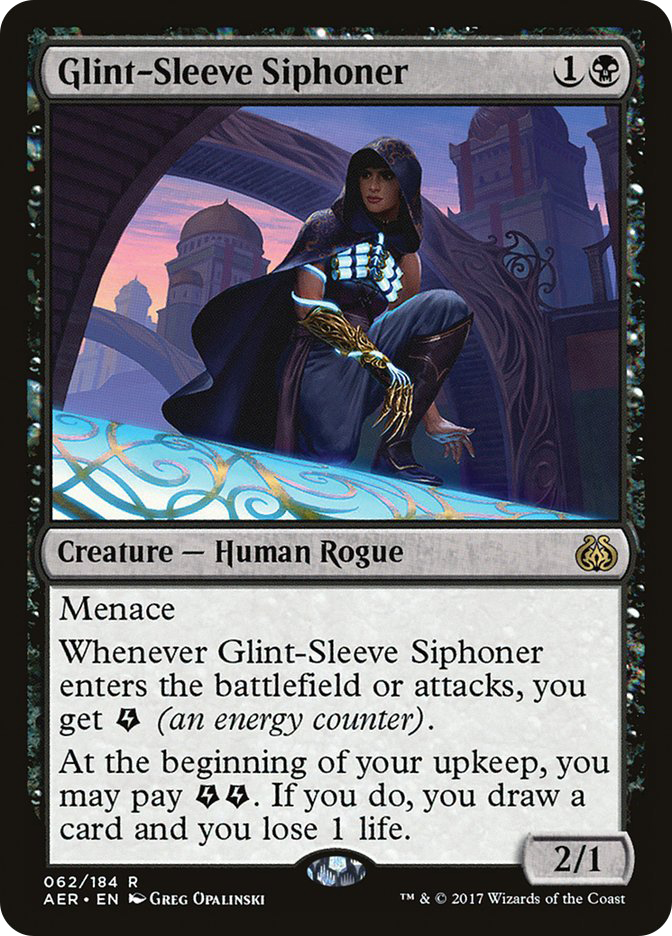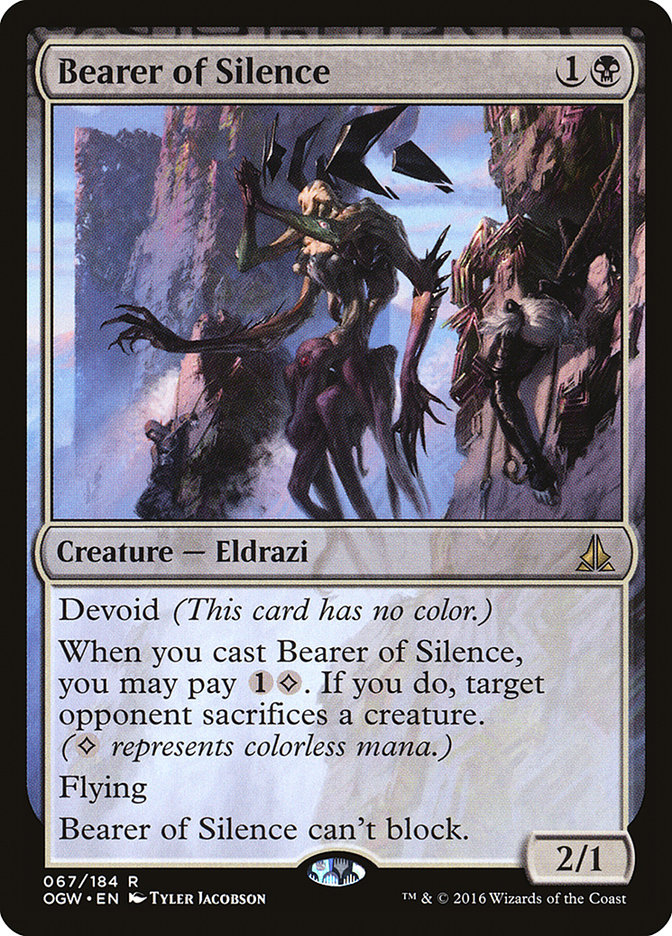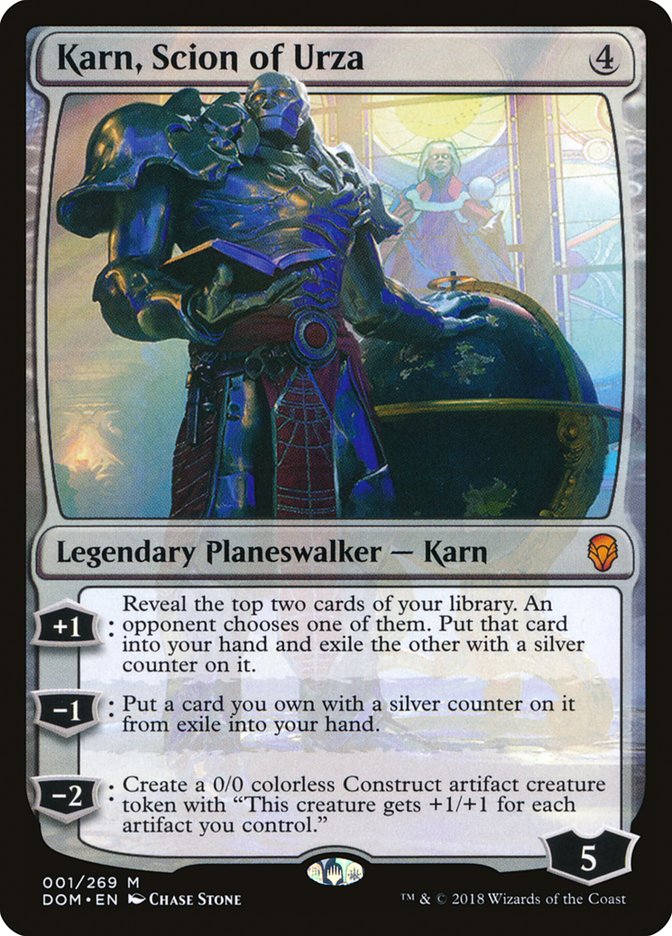It’s only been a couple of weeks since my return to Magic writing, and I’m
loving every minute of
it. I feel a new sense of purpose and fulfillment where previously there
was none. I enjoy preparation more because I know when I do a good job,
people who use my strategy advice will
have a greater experience. The positive support from the community has been
incredible as well, so a special thanks to everyone who has reached out to
me. That said, it’s time to turn to
Dominaria
previews, and the biggest bombshell I’ve seen so far is the reprinting of
the Innistrad
cycle of dual lands.
In
one of my first articles back,
I spoke about how poor the mana was in Standard, but I feel like we’ve
come full circle and now the mana in Standard is back to being incredible.
The reason for this is the addition of these sweet dual lands and the
format slowing down because the best aggressive decks, Mono-Red Aggro and
Temur Energy, both got weakened substantially by the bannings.
The average game length in Standard is longer than before, as Mono-Red
Aggro doesn’t win as quickly as it used to and Temur Energy as an archetype
doesn’t exist and lest we forget it was an aggro deck. Players liked to
call it midrange, but it was mostly creatures and the World Champion, Huey
Jensen, had four copies of both Longtusk Cub and Glorybringer in his
tournament-winning decklist
That’s beatdown, people.
One of my next articles back
was for a Grixis Energy list that has seen a ton of success lately.
My mana was pretty aggressive, but I almost always had more issue with card
choices than
mana. I’m not advocating that decklist, but simply using it as an example.
2 Swamp
1 Island
1 Mountain
I was able to support double red, double black, and double blue with ease.
It almost felt like cheating; I simply paired the black cycling lands with
the black dual lands, and with my remaining spots I included Aether Hub
(because it’s overpowered mana fixing) and enough basics to weaken Field of
Ruin. A little Kaladesh fastlands sprinkled on top and you’ve got
yourself a manabase, and it’s exactly as easy as it looks.
I decided to base my deck around being able to cast Vraska’s Contempt, so a
lean to the black fixing felt natural. The cycling lands allowed me to play
a higher land count guilt-free, but the more I played, the more I learned
that the cycling lands weren’t good because they cycled; they were good
because they make two colors of mana and allow Drowned Catacomb and
Dragonskull Summit to enter the battlefield untapped. They’re literally so
good I would argue that unless you already have one, it’s often a mistake
to cycle them.
Canyon Slough and Fetid Pools are like the gateway drug to perfect mana, as
they don’t slow you down because they enter the battlefield tapped.; they
actually speed you up because once you’ve placed one onto the battlefield,
many of your lands now enter the battlefield untapped. I give opening hands
that contain these two cards added weight and in the same breath, I would
advocate being more likely to mulligan hands without them. I’m not saying
lose focus of your common sense mulligan strategy, but these are good
guidelines to have when you’re on the fence and not sure what to do.
I like to mulligan land-light hands a little bit more often than I have
historically with decks like this
because I feel missing land drops is more devastating than drawing too many
lands. Additionally, I tend to mulligan a lot more often with hands I
dislike on the draw, and ever since the scry mulligan rule, I’ve found the
difference between seven and six plus a scry is substantially less extreme
than the difference between your normal seven and six. I also like to
mulligan hands that do not contain my best cards, so if I’m super unsure
about a hand, I just remind myself that mulliganing allows me the
opportunity to see six more cards and one of them might be a Glint-Sleeve
Siphoner.
A card worth mulliganing for.
These new lands will completely redefine Standard. Right now, it seems to
be very close to
proven that playing Mono-Red Aggro in most Standard metagames is a
suboptimal choice. Math says to play either The Scarab God or a rogue
strategy. As an example, I played U/W Gift in the MOCS this past weekend to
a 6-2 record. So, unless Dominaria completely revamps red decks or
the awesome mana makes way for sweet two-color beatdown decks, it appears
to me as if the format will be some mix of midrange, combo, and control
decks that all slot into three colors where matchup knowledge and card
choice are the most likely factors in deciding a game.
Previous versions of Owen Turtenwald would’ve been bragging to all his
friends about how skill-intensive the format looks and how all that’s left
to do now is figure out how to spend the prize money…
Okay, obviously I’m still doing that today.
My point with the dual lands is they drastically improve all decks. I’ve
seen so many Foul
Orchards lately, it makes me want to throw up. That card is horrible and
the cost of a full-stop tap land is at an all-time high in aggressive
decks. I think Winding Constrictor will be even better
now because 4 Blooming Marsh 4 Woodland Cemetery 4 Aether Hub 6 Swamp 6
Forest is
actually a totally respectable manabase. It’s polite, it’s right, it’s just
responsible.
I’m not saying Foul Orchard is unplayable because I myself have made top 8
of a Grand Prix with four Forsaken Sanctuary in my deck…
7 Swamp
2 Plains
What I’m saying is there’s a time and a place for everything, and in slow
control decks with
sweepers that allow you to produce card advantage and make up for lost time
with for time lost
from lands that enter the battlefield tapped lands, it’s more reasonable to
play cards like this. My deck had four copies of both Languish and Gideon,
Ally of Zendikar in it, so it’s understandable why I would want as much
black and white mana as I could get my hands on. I actually beat my boss
playing deep in day two in top 8 contention in the mirror match!
CEDitor’s Note: This thing dealt me twelve damage…
I expect Winding Constrictor decks to be tier one, but not all this
nonsense I see with Hadana’s
Climb. I want good old fashioned two-color beatdown with all the right
tools. I want four copies of Fatal Push, four copies of Vraska’s Contempt,
and some copies of Blossoming Defense sprinkled on top.
I’m also seeing some room here for Evolving Wilds to make a resurgence.
When mana-fixing
cares about basics and the format slows down, that gives room for Evolving
Wilds to be a very
attractive option. Here’s my manabase from when I won Grand Prix Houston
2016:
1 Swamp
1 Island
1 Plains
1 Forest
I understand that playing with Polluted Delta and Jace, Vryn’s Prodigy in
Standard is completely
busted so I did it at the Pro Tour as often as I could. The core concept is
the same; you can build a manabase that lets you do virtually anything.
This deck was trying to cast spells that cost 1GB and 1UW on turn 3, so I
was trying to use a combination of lands that could do both. Island, Swamp,
Canopy Vista, and Plains, Forest, Sunken Hollow both accomplish this task.
Theoretically, in Standard today, if I wanted to build a manabase that
could cast Whirler Virtuoso
and Kambal, Consul of Allocation, I know I could do it.
1 Island
1 Mountain
1 Swamp
1 Plains
This is only 23 lands, but it provides me with twelve sources of each
color.
This is purely a hypothetical situation since it doesn’t appear as if
Kambal is a card I want to put
in my main deck and if I was to play with Whirler Virtuoso, you know I’d be
playing with Aether
Hub and Harnessed Lightning, but the point remains the same. We’re entering
a multicolored
dawn for Standard, and it’s going to be very similar to the days where
Mantis Rider decks also
played Kolaghan’s Command and occasionally you saw extremely bizarre
behavior like
combining Chained to the Rocks and Siege Rhino.
It does seem to me like Sulfur Falls is a huge win for Jeskai Control
decks. I’ve noticed Splinter Twin decks in Modern that still play four
copies of Sulfur Falls even years after it was printed, so there’s no
denying that these lands are among some of the best lands ever printed.
Spirebluff Canal mimics Blackcleave Cliffs, and four Blackcleave Cliffs
have been a staple of Jund
in Modern since the dawn of time. These are super pushed Constructed lands
and you can do
absolutely anything with them.
I’m hopeful for the future of Standard, and I think talk of the sky falling
in terms of a metagame
saturated by The Scarab God were completely justified, but now with a new
set coming in and
better options for all decks across the board, it looks like energy and its
reign of terror will be put
right back in their place. It will be a daunting task to test all the
various combination of three-color decks, but as I said at the beginning of the article I’m more
motivated than I’ve ever been in the past.
That said, I fear a new card might be pushed a little too far and it might
be time to play vehicles again…


